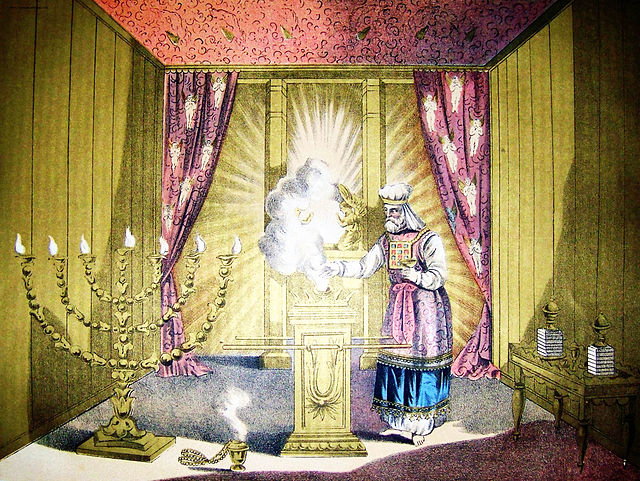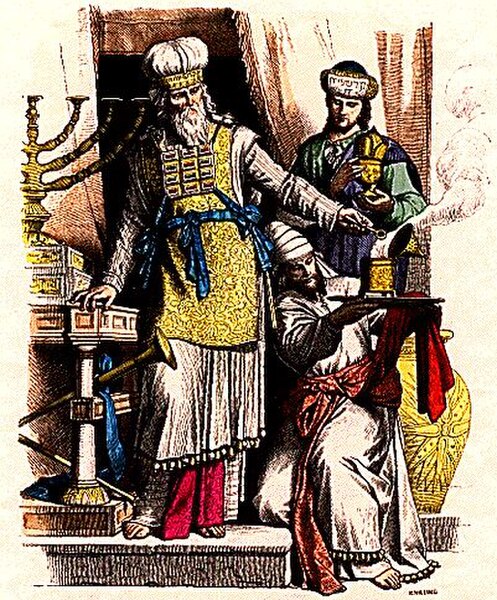The Samaritan High Priest is the high priest of the Samaritan community in the Levant. According to Samaritan tradition, the office has existed continuously since the time of Aaron, the brother of Moses, and has been held by 133 priests over the last 3400 years. However, the historicity of this claim is disputed. One account by Josephus suggests that its office holders are an offshoot of the Zadokite high priests of Jerusalem from around the time of Alexander the Great. As of 2013, the incumbent high priest is Abdel V.
Family of the Samaritan High Priests, 1876. To the left is a scribe named Shalabi, to the right are Isaac the son of the High Priest Amram ben Shalma, then Abisha, the son of Amram's brother Pinehas, and finally Uzzi the son of the High Priest Yaacob ben Aaharon ben Shalma, the son of Amram's brother Aaharon.
Jacob I.
Maṣliaḥ (or Abishah III.)
Amram IX.
In Judaism, the High Priest of Israel was the head of the Israelite priesthood. He played a unique role in the worship conducted in the Tabernacle and later in the Temple in Jerusalem, as well as in some non-ritual matters. Like all priests, he was required to be descended from Aaron. But unlike other priests, the high priest followed more restrictive laws, wore unique priestly garments, and was the only priest allowed to perform certain ceremonies.
High Priest in the Holy Place.
A traditional list of the Jewish high priests.
Jewish high priest and Levite in ancient Judah (the depictions of the Menorah, Table of Showbread and trumpets are inspired by the Arch of Titus).







